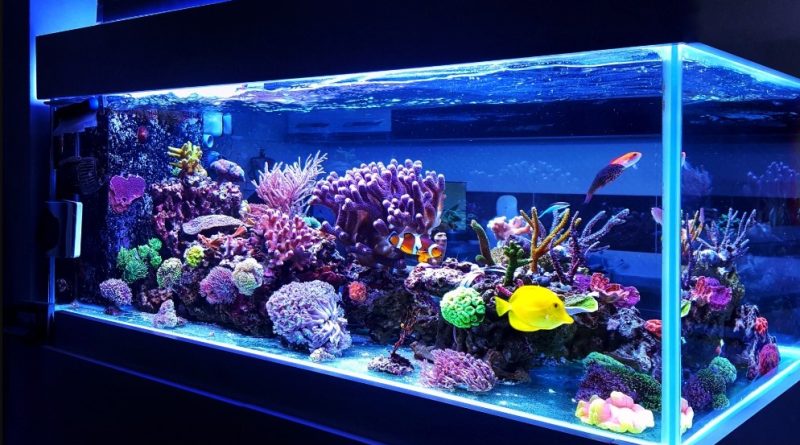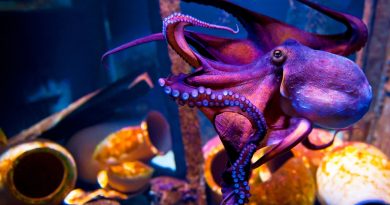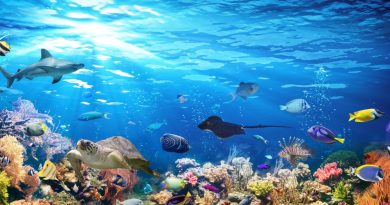It is possible to have saltwater fish in an aquarium
Almost every beginner aquarist has heard this advice: for beginners, it’s best to choose a freshwater aquarium, right? While this is not a rule, the fact is that a saltwater aquarium is usually more expensive and labor-intensive to set up and maintain.
Therefore, the first step before buying a marine aquarium for beginners is to check if it fits your budget. Then, review the other care you should give to it.
- Know the compatibility of species: Whether the aquarium is freshwater or saltwater, knowing the origin of the species that will live in it is crucial so that all depend on the same temperature and pH range. Additionally, understanding the behavior of each fish is important to avoid fights and even deaths in the aquarium. In the case of reef-type marine aquariums, the coexistence of different phyla such as fish (chordates), corals (cnidarians), and crustaceans (arthropods) also needs to be considered.
- Pay attention to the material of accessories: Buying only quality equipment is crucial to provide greater peace of mind to any type of aquarium. Accessories like thermostats, chillers, filters, heaters, etc., can help maintain water parameters, prevent temperature changes, and water pollution. However, for saltwater aquariums, attention must also be paid to the materials used, as metal objects inevitably rust. Therefore, ideally, the equipment should be made of durable plastic and/or stainless steel.
- Illuminate as you like: Especially for those wondering how to set up a reef-style saltwater aquarium, lighting is important for a healthier and more beautiful ecosystem, as it affects the coral’s photosynthesis capability and reduces algae proliferation. Although this can vary from tank to tank, it is generally recommended to provide 8 to 12 hours of lighting per day. Ideally, these lights are of high quality and specifically designed for the aquarium. As a result, they do not heat up as much, and the water temperature varies less.
- Regular partial water changes: In marine aquariums, there are two main reasons for hydration: replacing evaporated water and restoring the aquarium’s balance by replenishing water elements. While evaporated water should be replaced with fresh, filtered, and conditioned water with the same parameters as the aquarium water, part of the water change is done with saltwater, as its purpose is to replenish levels of essential elements for fish and corals, with a focus on calcium. A trick for this is to prepare water for coral aquariums with specific synthetic salts; seawater already contains all 70 elements. Remember, synthetic salt can only be mixed with water filtered by reverse osmosis or deionizer to remove impurities and heavy metals. Additionally, it is recommended to replace only 20% to 30% of the water. The regularity depends on the stability of the aquarium.
- Keep water quality parameters always stable: The ocean floor is one of the most stable ecosystems on Earth. It is for this reason that any changes in water parameters are felt by the inhabitants of the marine aquarium. To maintain water quality, aquarists must rely on reliable and high-quality equipment and reliable water quality tests. The basic equipment to maintain water quality parameters in a saltwater aquarium includes:
- Thermometer: Indicates the water temperature;
- Thermostat: Besides identifying the temperature, as the temperature drops, the heater will be triggered to keep the temperature stable;
- Cooler: The interior works as a refrigerator and serves to cool the aquarium water;
- Hydrometer: Indicates water salinity;
- Water pump: facilitates water circulation, aids gas exchanges between water and atmosphere, allows oxygenation;
- Filter: Removes organic matter from the water before starting the nitrogen cycle, preventing the water from being polluted by excess ammonia, nitrite, and nitrate.
Oh! It is worth mentioning that, in addition to equipment, all elements of the aquarium should also contribute to its stability, with emphasis on substrate and live rock. When chosen correctly, they can harbor aquarium-friendly bacteria that help filter the water.Regarding tests, the most important tests for marine aquariums are pH, ammonia, nitrite, and nitrate, in addition to tests to determine calcium and magnesium levels. Whenever they are low, partial water changes are recommended. To help with maintenance, another tip is to clean the aquarium with a siphon to remove algae and leftover food.
Liked the article “IS IT POSSIBLE TO HAVE SALTWATER FISH IN AN AQUARIUM“? Stay tuned for updates; we post daily tips for all pets and wild animals. It’s worth following.





Thanks for these tips. One thing I also believe is that often credit cards offering a 0 monthly interest often appeal to consumers in with zero rate, instant endorsement and easy over-the-internet balance transfers, but beware of the most recognized factor that is going to void your current 0 easy road annual percentage rate and also throw you out into the terrible house rapid.
My wife and i have been absolutely delighted when Michael could conclude his analysis with the precious recommendations he made from your very own weblog. It’s not at all simplistic to just continually be offering tactics which often a number of people have been trying to sell. We really understand we have got you to give thanks to for that. The most important illustrations you made, the easy website menu, the relationships you assist to engender – it’s got many astounding, and it’s really aiding our son and our family imagine that that theme is excellent, which is highly essential. Many thanks for all!
Thanks a ton for your post. I want to say that the cost of car insurance differs a lot from one plan to another, for the reason that there are so many different issues which contribute to the overall cost. By way of example, the model and make of the car or truck will have a tremendous bearing on the charge. A reliable old family vehicle will have a more economical premium when compared to a flashy racecar.
Heya just wanted to give you a quick heads up and let you know a few of the images aren’t loading correctly. I’m not sure why but I think its a linking issue. I’ve tried it in two different internet browsers and both show the same outcome.